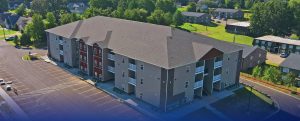State of the Southeast Market Update
Commercial real estate is taking a beating as ongoing interest rate hikes and weakening fundamentals have decelerated growth and sales activity. Although Southeast real estate reached record heights post-COVID-19, the region started to feel the pain in the first half of 2023, with transaction activity dropping and rent growth stalling. On the other hand, investors are still bullish on Southeast metros’ long-term outlook as population growth and job demand remain strong, in addition to many primary and secondary Southeast markets being large logistic and transportation hubs.
Industrial
The onslaught of industrial deliveries has caused a shift in vacancy rates throughout the Southeast as millions of square feet are entering or plan to enter the market by the end of the year. Leasing activity has slowed compared to 2021 levels but is still above pre-pandemic levels for the majority of markets. The growth and investment in semiconductor, vehicle, and solar manufacturing will help sustain the longevity of Southeast industrial and keep investors interested.
Atlanta
Vacancies tightened, and leasing began to decline during the first half of 2023 for Atlanta’s robust industrial sector. Fortunately, the slowdown is more of a return to normalcy than a completely downturned market, as the current vacancy rate of 4.7% is still lower than historical averages. The market has 26.5 million square feet underway, which will be delivered over the next two years, with more than 70% unleased, according to CoStar. The new supply will most likely increase vacancy, but Atlanta’s prime location keeps its industrial market desirable and profitable. The metro is a distribution hub for both the lower Midwest and the South, with connections to ports in Charleston, Jacksonville, and Savannah. Rent growth is strong at 9.8%, outpacing the national average, and is expected to accelerate once again as construction slows.
Multifamily
The Southeast multifamily market remained strong in Q1 and Q2 2023 but is facing some challenges going into the second half of the year. Rent growth in suburban areas has remained positive, with only a few outliers. Population and job growth continue to hold up southeastern markets as corporate relocations create demand for more units, helping sustain rent rates.
Atlanta
The Georgia capital closed Q2 2023 with the strongest positive absorption in nearly two years, reported CoStar Group. To note, this absorption was mainly
within the luxury apartment sector. Leasing activity also increased in Q2, but new supply will likely push vacancy up. Atlanta currently has 32,000 units in progress, representing 6.6% of its existing inventory. Rent growth is down 2.3%, with the average market asking rent at $1,632. The most significant stat for the metro is transaction volume for H1 2023 is down more than 80% from the same period the previous year. With that said, multifamily investors are still bullish on Atlanta due to its strong demographics, but rising interest rates and decelerating rent growth have caused a steep decline.
The Carolinas
Similar to neighboring markets, the Carolinas received steady demand to start in 2023 but are now facing a large influx of supply that will affect rent growth and vacancy rates. Charlotte’s vacancy rate is 9.7%, much higher than the national average of 6.9%. The metro remains in the top five in the U.S. for construction, with 15.4% of existing inventory on the way. Long-term demand for multifamily units is expected to remain as job growth continues to be positive, but short-term demand is slowing, and rent growth fell negative for the first time in 10+ years. Charleston, SC, boasts a similar vacancy rate of 9.2%, although above the national average, is close to the market’s 10-year average. Rent growth is positive, 2.4%, with suburban areas reporting stronger growth than Charleston’s downtown. Market asking rent is on par with larger metros such as Austin and Atlanta at $1,740 monthly. Manufacturing tenants have supported the continued demand, bringing blue-collar and white-collar jobs to the area.
Nashville
A record-setting construction pipeline threw Nashville’s multifamily market into unsteady waters, with more than 13,000 units expected to open by the end of 2023. The increase in units shot vacancy to a 15-year high, 11%, with Downtown Nashville receiving the majority of new deliveries. Rising interest rates affected the Nashville market greatly in Q1 and Q2, but sales have recently picked up, moving into the year’s second half. Assets going for the highest pricing include newly built, urban core developments and new-build suburban communities. Among the top submarkets are Rutherford, Wilson, and Maury counties.
Retail
Consumer purchasing power is down, but retail has remained strong throughout the volatile macroeconomic environment. Mixed-use development picked up throughout the region and continues to pull investor interest. Vacancy rates remain low and rent growth is positive. According to RCA, U.S. retail property sales are down 66% year-over-year. Southeast markets are seeing declining sales volume but not to the extent of the U.S. average.
Fort Lauderdale
Fort Lauderdale saw 2.5 million square feet leased in Q2 2023 with net absorption remaining positive and market vacancy rates staying low at 3.3%. Strong demographics helped the metro’s buying power and international tourism rebounded in 2023, bolstering retail sales. Fort Lauderdale’s retail construction pipeline is relatively small compared to previous years and the third lowest in the state reporting only 450,000 square feet to be delivered by year-end. Sales volume is down over 50% year-over-year due to the slowing economy, but investors will return in 2024 as the market boasts strong rent growth and occupancy.
Tampa
As reported by CoStar Group, Tampa had 11 consecutive quarters of positive absorption, as tenants were vying for space after the metro’s population boom in
2021 and 2022. Discount retailers, gyms, and food and beverage companies are actively entering and expanding in Tampa, keeping vacancies at 4%. There are approximately 810,000 square feet currently under construction, with the majority of the projects within 25,000 to 45,000 square feet. Sales activity is stronger than other Southeast markets, with Tampa recording $1.5 billion in volume over the past 12 months. A handful of mall transactions made Q2 one of the best quarters in the past decade.
Nashville
Retail rents in Nashville grew at one of the fastest rates in the country over the past 12 months. Annual rent growth is 6.1%, putting the market asking rent at $27.94 per square foot. Despite strong growth, the development pipeline is moderate with 1.2% of the metro’s existing inventory underway. Nashville is a top metro for mixed-use development and redevelopment projects. The Tennessee Titans recently announced plans for a new stadium with a neighboring community complex featuring housing, retail, and hospitality. In addition, the Bellevue Center Mall is being turned into One Bellevue Place, a large mixed-use complex.
Takeaways
Overall, the Southeast has a positive long-term outlook, and investors are actively looking for deals throughout the region. Sales activity will remain subdued until interest rates decline, but increasing job opportunities and population growth continue to hold up market fundamentals to above-average levels.









